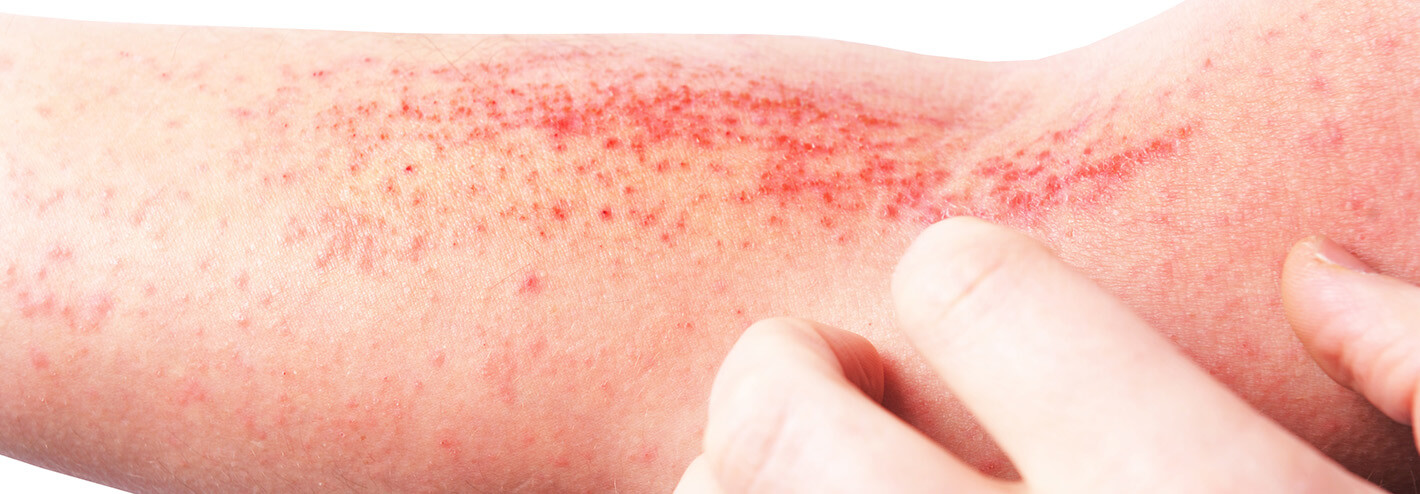The contents of this website are not intended to be medical advice.
Please see your healthcare
professional
with any specific questions about your condition and / or treatment.
Taking care of your skin with atopic dermatitis


The contents of this website are not intended to be medical advice.
Please see your healthcare
professional
with any specific questions about your condition and / or treatment.


The skin is widely considered to be the largest organ of a human body. Despite being only 2 mm thick, the skin performs many different and essential roles for human health, including:
In atopic dermatitis, the dysfunction of the skin barrier is a central feature of the condition and is caused by a combination of genetic, environmental, and immunological factors.
A regular schedule of care to maintain your skin barrier is important in managing atopic dermatitis, locking water into the skin and maintaining the barrier, helping to limit dry, itchy and inflamed skin, while also stopping pathogens moving into or through the organ.
In atopic dermatitis, the skin barrier is often compromised, making it easier for external substances (pollution, pathogens) to penetrate the skin, potentially triggering immune responses, or infections. The dysfunction of the skin barrier also leads to excessive water loss due to a breakdown of the water storage function of the barrier, resulting in dry, cracked, and scaly skin.
Factors that contribute to the skin barrier becoming compromised can include:
A well recognised genetic contributor to skin barrier dysfunction in atopic dermatitis is an altered filaggrin gene. This encodes a crucial protein for the formation and maintenance of the skin barrier, helping to form the outermost layer of the skin and aiding in moisture retention. Changes to this gene lead to reduced or abnormal filaggrin levels, a weakened skin barrier that is less able to retain moisture, and more susceptible to irritation and allergen penetration.
The skin barrier relies on a healthy layer of lipids (fats) to maintain its integrity. In people with atopic dermatitis, key skin lipids can often be lacking or out of balance, which may lead to increased water loss from the skin. In turn, this makes the skin dry, prone to cracking, and more vulnerable to external irritants and allergens.
The immune system plays a significant role in atopic dermatitis, usually through an overactive immune response characterised by an increase in certain key immune modulating molecules. These molecules can impair skin barrier function by reducing the production of core proteins and lipids, further exacerbating the first two points, above. The molecules also promote inflammation (usually a good thing in fighting off infection, but a negative when activated inappropriately), which causes damage to surrounding tissues, in this instance the skin barrier.
The important role of a good, well-balanced, gut microbiome has received a lot of attention in recent years, rightly so given its role in maintaining human health. However, much less has been heard about the skin microbiome, though this is crucial for maintaining skin health, particularly the balance of different bacteria. In atopic dermatitis, there can be a lack of balance in the skin microbiome, and overgrowth of the Staphylococcus aureus bacteria that exacerbates inflammation and contributes to skin barrier dysfunction. This bacterial imbalance further weakens the skin's ability to act as a protective barrier.
External factors such as harsh soaps, detergents, pollution, low humidity, and irritants can strip the skin of its natural oils, further compromising the skin barrier. These factors can exacerbate the already weakened barrier in people with atopic dermatitis.
A regular and consistent schedule of skin care is essential to maintain the skin barrier, and to restore the barrier once compromised. Use of emollients (medical moisturisers, without scents or extra additives) during daily skin care is pivotal in the management of atopic dermatitis.
These should be applied several times a day to increase hydration, and act as a barrier on top of the skin. Having a personal routine to make sure emollients are applied every four to six hours is essential, though more frequent use may be required under dry conditions or when you are exposed to flare-up triggers.
In most cases, the thicker the emollient, the better it is for the skin as they contain more protective fats and less water.
Bathing or showering daily for 5-10 minutes can help to hydrate the skin and remove scaley or crusty skin, as well as any irritants or allergens on the skin surface. During a bath or shower, hot water should be avoided as this can cause the skin to dry out, warm water should be used instead, and showers should be limited to a 10-minute maximum. Soaps can irritate the skin or include chemicals that act as potential triggers, so it is best to use non-irritant (hypoallergenic) and mildly acidic soaps or cleansers without soap, and to avoid rough scrubbing whilst showering.
The soak and seal method involves applying emollients to the skin immediately (within 3 minutes) after washing to prevent evaporation and ‘lock-in’ the water to ensure the skin remains well hydrated.
By wearing loose-fitting, soft, and breathable clothing, you can avoid irritation of the skin, helping to maintain its optimum condition. Consider clothing made from natural fibres, such as cotton, as these tend to be gentler on the skin than man-made alternatives.
Some UV exposure from the sun is important for our health, with an anti-inflammatory and mood-raising effect, as well as creating vitamin D. However, it’s clearly possible to have too much of a good thing, with the harmful effects of UV overexposure being well understood. Having atopic dermatitis means your skin barrier is more susceptible to damage, so extra care in the sun is important.
Use a broad-spectrum sunscreen suitable for sensitive skin, making sure it’s free from fragrances and other potential irritants. Consider trying mineral or physical sunscreens, which may be better tolerated than chemical sunscreens, or a sunscreen with added moisturisers, which can help support the skin barrier. There are many options available, so try a few and find one that works well for you. A hat and UV-protective clothing can provide additional protection.
The changing seasons, from the frosty mornings of winter to the long, warm evenings of summer, are one of the joys of life. For those with atopic dermatitis, planning for these changes helps ensure you can enjoy them to the full, as seasonal changes often influence the frequency and severity of flare-ups, with each season posing a unique challenge and requiring adjustments in skincare routines to maintain optimal moisture levels and lifestyle habits to avoid common triggers.
By paying close attention to how the skin reacts to different weather conditions and making proactive changes, it’s possible to reduce the frequency and severity of flare-ups across all seasons.

In winter, the cold, dry air can wick moisture from the skin, leading to increased dryness and itchiness. Indoor heating further reduces humidity, exacerbating these effects and potentially causing more frequent or more severe flare-ups. To manage these challenges, you may need to moisturise more frequently than normal, especially after bathing and before going outdoors. You could also try using a humidifier at home, in bedrooms and living spaces, to keep indoor air moist and prevent additional irritation.
When choosing clothes for the day, try layering with multiple thinner layers that can be added or removed as needed, to help maintain a comfortable body temperature.

Springtime brings a new set of challenges, particularly with the increase in environmental allergens like pollen. To minimise these impacts, keep an eye on pollen warnings and try keeping windows closed during high pollen days, showering after being outdoors, and using an air purifier if needed.
Wearing light, breathable clothing and showering promptly after outdoor activities can help prevent sweat and allergens from aggravating the skin.

Summer's heat and humidity present another challenge, as they can lead to sweating, which may irritate the skin and cause flare-ups. Additionally, exposure to the sun can worsen symptoms for some people. Staying cool by spending time in the shade or cooler parts of a building, drinking plenty of water, and wearing loose, breathable clothing are crucial steps to manage atopic dermatitis in the summer.
Be aware of the UV levels each day and be sure to regularly use a sunscreen designed for sensitive skin, free of fragrances, and hypoallergenic, to protect from sun damage.

Autumn, with its fluctuating temperatures, can cause the skin to dry out as the weather moves from warm to cool; assess your skincare regime, and consider increasing the frequency of emollient application as needed.
Certain allergens are more common in autumn, such as mould and fungal spores, which can trigger flare-ups. To protect against allergens, keep living spaces dry and clean, and use an air purifier if necessary. As with Winter, wearing layers of soft, breathable clothing that can be adjusted throughout the day helps to manage the skin’s response to changing temperatures.